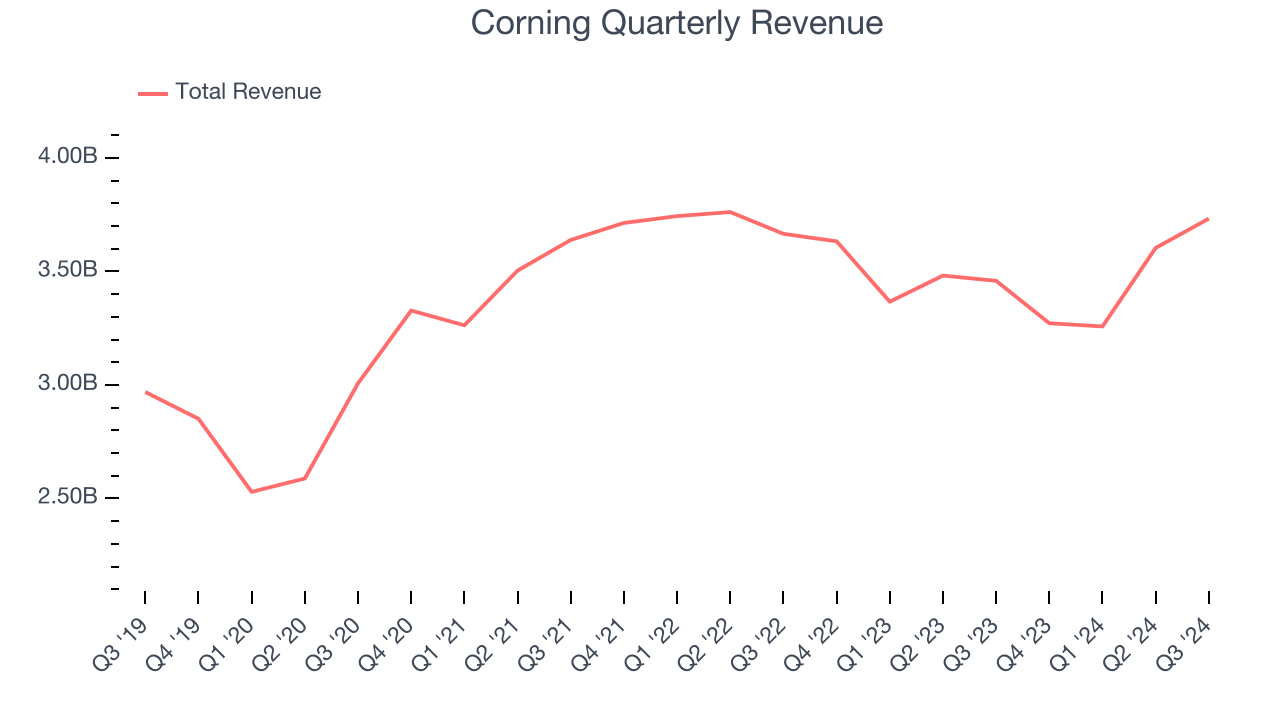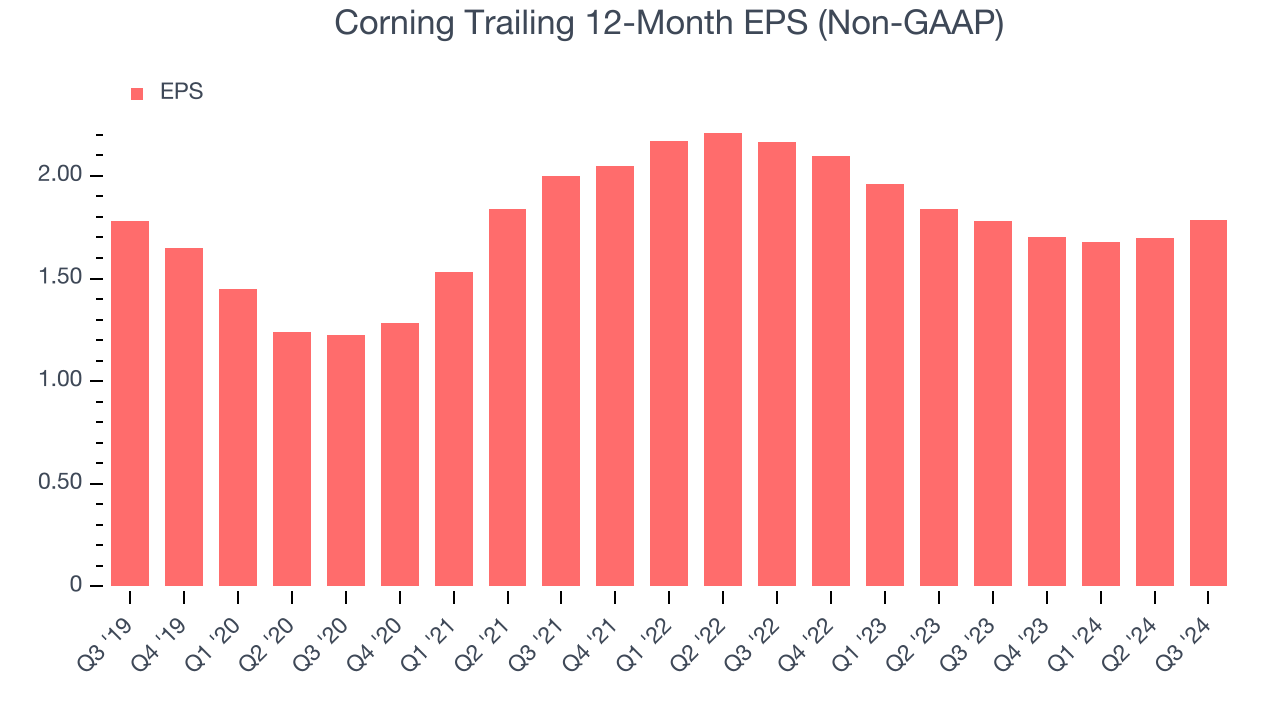
Corning’s 33.6% return over the past six months has outpaced the S&P 500 by 20.2%, and its stock price has climbed to $47.90 per share. This was partly due to its solid quarterly results, and the performance may have investors wondering how to approach the situation.
Is there a buying opportunity in Corning, or does it present a risk to your portfolio? Get the full breakdown from our expert analysts, it’s free.We’re glad investors have benefited from the price increase, but we don't have much confidence in Corning. Here are three reasons why you should be careful with GLW and one stock we like more.
Why Do We Think Corning Will Underperform?
Supplying windows for some of the United States’s earliest spacecraft, Corning (NYSE: GLW) provides glass and other electronic components for the consumer electronics, telecommunications, automotive, and healthcare industries.
1. Long-Term Revenue Growth Disappoints
Examining a company’s long-term performance can provide clues about its quality. Any business can put up a good quarter or two, but the best consistently grow over the long haul. Regrettably, Corning’s sales grew at a sluggish 3.1% compounded annual growth rate over the last five years. This fell short of our benchmark for the industrials sector. 
2. EPS Growth Has Stalled
Analyzing the long-term change in earnings per share (EPS) shows whether a company's incremental sales were profitable – for example, revenue could be inflated through excessive spending on advertising and promotions.
Corning’s flat EPS over the last five years was below its 3.1% annualized revenue growth. This tells us the company became less profitable on a per-share basis as it expanded.

3. Previous Growth Initiatives Haven’t Paid Off Yet
Growth gives us insight into a company’s long-term potential, but how capital-efficient was that growth? Enter ROIC, a metric showing how much operating profit a company generates relative to the money it has raised (debt and equity).
Corning’s five-year average ROIC was 4.4%, somewhat low compared to the best industrials companies that consistently pump out 20%+. Its returns suggest it historically did a mediocre job at investing in profitable growth initiatives.

Final Judgment
We see the value of companies helping their customers, but in the case of Corning, we’re out. With its shares beating the market recently, the stock trades at 22.1x forward price-to-earnings (or $47.90 per share). This valuation tells us it’s a bit of a market darling with a lot of good news priced in - we think there are better stocks to buy right now. We’d recommend taking a look at Meta, a top digital advertising platform riding the creator economy.
Stocks We Would Buy Instead of Corning
With rates dropping, inflation stabilizing, and the elections in the rearview mirror, all signs point to the start of a new bull run - and we’re laser-focused on finding the best stocks for this upcoming cycle.
Put yourself in the driver’s seat by checking out our Top 5 Strong Momentum Stocks for this week. This is a curated list of our High Quality stocks that have generated a market-beating return of 175% over the last five years.
Stocks that made our list in 2019 include now familiar names such as Nvidia (+2,691% between September 2019 and September 2024) as well as under-the-radar businesses like United Rentals (+550% five-year return). Find your next big winner with StockStory today for free.
